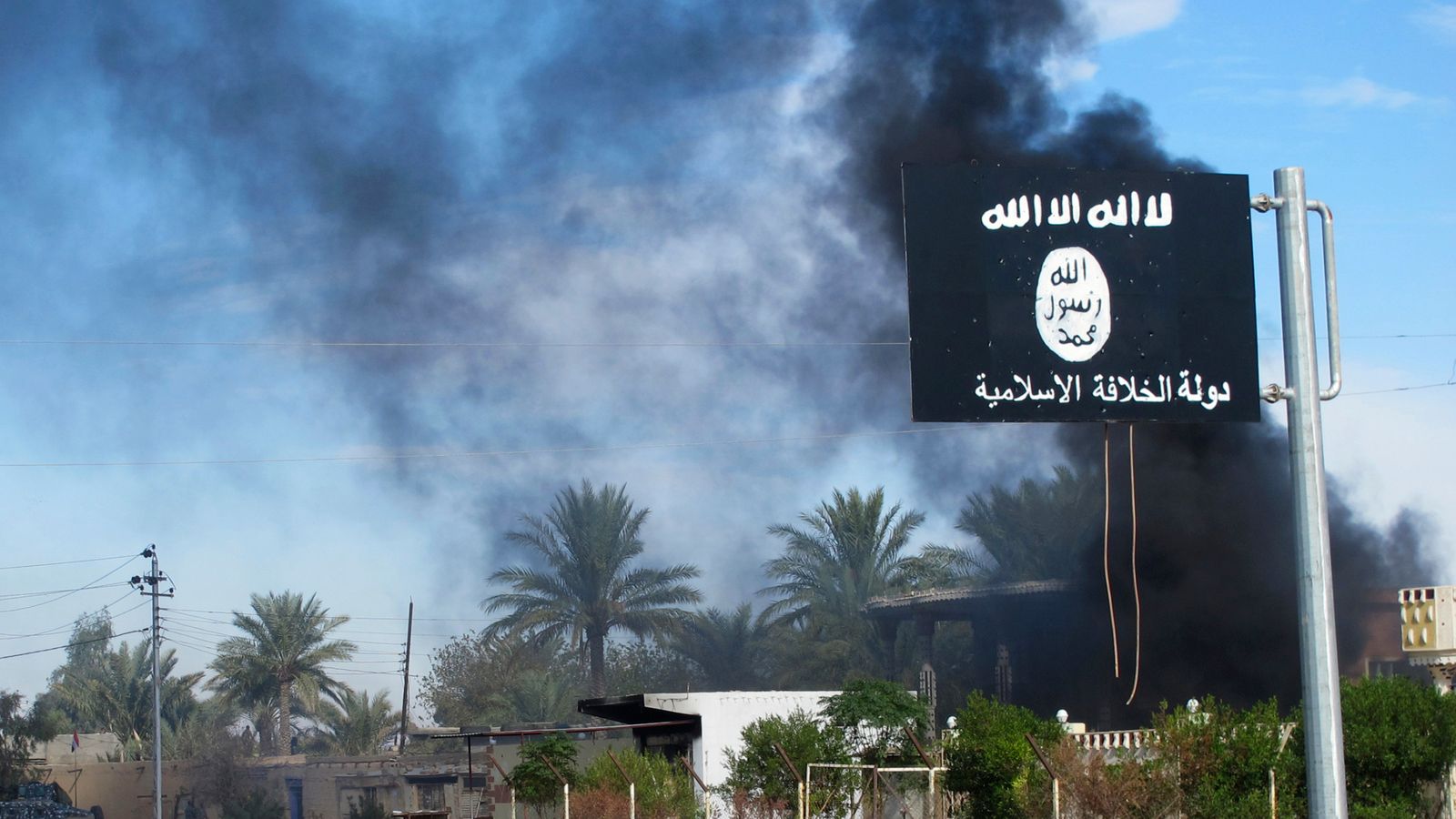The leader of the so-called Islamic State blew himself up after he and his aides were surrounded in Syria, a witness says.
Abu al-Hassan al-Hashemi al-Qurayshi was killed in an operation carried out by the rebel Free Syrian Army (FSA) in Jasem in the northwestern Deraa province in mid-October, according to the US military.
Al-Quraishi’s death and a successor were announced by IS on Wednesday – more than a month later.
The militant group, which once laid claim to swathes of territory across Syria and Iraq, still carries out sporadic attacks.
“The leader and a companion blew themselves up with suicide belts after our fighters succeeded in storming their hideout,” said Salem al Horani a resident of Jasem and former fighter who participated in the siege of the three houses where the IS cell was discovered.
Deraa province was brought under the control of the Syrian army following Russian-brokered reconciliation agreements in 2018 that gave control of southern Syria back to Damascus.
The FSA had received backing from the West and Gulf states until they withdrew support in 2018, but its fighters remained in the area after the reconciliation deals under which they handed over heavy weapons but were allowed to keep light arms.
Islamic State’s second leader of the year Abu al Hassan al Hashimi al Qurayshi killed in battle
Barber shop owner sent COVID grant money to Islamic State fighters, court hears
El Shafee Elsheikh: The ISIS Beatle known as ‘Ringo’, who grew up in west London and went to Syria
IS spokesman Omar al-Muhajer said Al-Qurayshi “died fighting the enemies of God”.
Al-Qurayshi is the third leader to be killed since founder Abu Bakr al-Baghdadi was hunted down by the Americans in a raid in northwest in October 2019.
Al-Muhajer said Abu al-Hussein al-Husseini al-Qurayshi was named as the group’s new leader.
None of the al-Qurayshis are believed to be related. Al-Qurayshi is not their real name but comes from Quraish, the name of the tribe to which Islam’s Prophet Muhammad belonged.
IS claims its leaders hail from this tribe and “al-Qurayshi” serves as part of an IS leader’s nom de guerre.
Read more:
IS ‘Beatle’ jailed gets eight life terms after hostages beheaded
Barber shop owner ‘sent COVID-19 grant money to IS fighters’
Please use Chrome browser for a more accessible video player
Where is the Islamic State now?
IS emerged from the chaos of the civil war in Iraq and grew to encompass huge areas of Iraq and Syria in 2014.
It was infamous for its brutal rule during which it killed and executed thousands of people and acted as a sponsor of terror attacks worldwide.
Former leader Abu Bakr al-Baghdadi declared an Islamic caliphate from a mosque in the northern Iraqi city of Mosul that year and proclaimed himself caliph of all Muslims.
However its reign was brought to an end in Iraq in 2017 and in Syria two years later.
The group and its affiliates continue to carry out deadly attacks, including on territory it once claimed as part of its caliphate.
Earlier this month, IS militants attacked an Iraqi army position in the northwestern governorate of Kirkuk, killing four soldiers.
On Wednesday, a bomb blast hit a religious school in northern Afghanistan killing at least 10 students, according to a Taliban official.
There was no immediate claim of responsibility but the attack came amid a campaign of violence by the Afghan affiliate of IS that has escalated since the Taliban took power.








